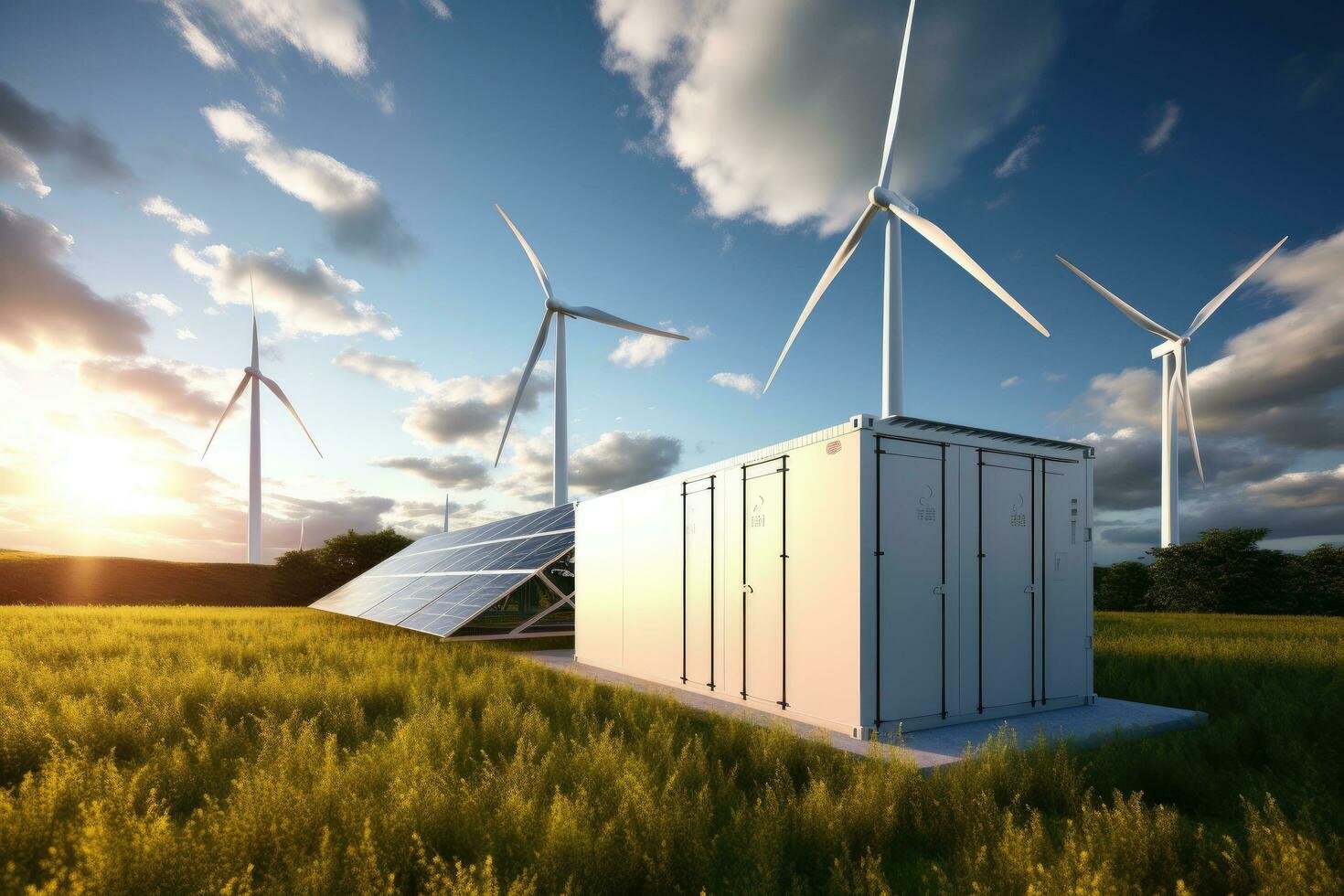A wind-solar power plant, also known as a hybrid wind-solar power system, integrates both wind turbines and solar photovoltaic (PV) panels to generate electricity. This approach leverages the complementary characteristics of wind and solar energy resources to provide a more stable and reliable power supply. Here are the key aspects of such systems:
Complementary Nature: Solar panels generate more electricity during daylight hours, especially on sunny days, while wind turbines tend to produce more power at night or during stormy weather when sunlight is less abundant. This natural complementarity helps to balance out the power output over 24 hours, reducing the overall intermittency common to both wind and solar standalone systems.

Hybrid wind-solar power System Types:
- Off-Grid Systems: These are self-contained and do not rely on the main power grid, making them suitable for remote locations with no or unreliable grid access. They often include battery storage to ensure continuous power supply.
- Grid-Connected Systems: These systems feed excess electricity into the public grid and can draw power from the grid if needed, allowing for more flexibility and potentially generating revenue through feed-in tariffs.
wind solar power plant Advantages:
- Reliability: By combining two renewable sources, the system ensures a more consistent power supply, reducing the risk of power outages due to the variability of either source alone.
- Cost Efficiency: The combined system can reduce the overall cost per kilowatt-hour by optimizing the use of infrastructure and minimizing the need for backup power sources.
- Reduced Environmental Impact: Both wind and solar are clean energy sources, contributing to reduced greenhouse gas emissions and a lower carbon footprint compared to fossil fuel-based power generation.
- Flexibility in Design: Hybrid systems can be scaled up or down, from small residential installations to utility-scale power plants, accommodating diverse energy needs.
Challenges and Solutions
Volatility of Power Generation
- Storage Capacity: One of the main challenges is the volatility of power generation. According to estimates by H.-W. Sinn, significant pumped-storage capacity would be required to manage this volatility, which is currently limited in many countries, including Germany.
- Surplus of Wind-Solar Power Plants: Increasing the number of wind-solar power plants can help reduce the required storage capacity. By having a surplus, the system can better handle periods of low wind or solar availability.
- Smart Meters: Installing smart meters can optimize power usage and distribution, ensuring that excess power is stored or distributed efficiently during high-production periods.
- Different Types of Equipment: Using a variety of wind turbines and solar panels can improve the overall efficiency and reliability of the system. For example, some wind turbines are designed to operate effectively at lower wind speeds, while others are optimized for higher wind speeds.
Global Developments
China
- Large-Scale Installation: China is the world leader in wind power installation, with a cumulative installed capacity of over 210 GW as of 2018. The country is also rapidly expanding its solar power capacity, making it a prime candidate for wind-solar hybrid projects.
- Policy Support: The Chinese government has implemented strong policies to promote renewable energy, including subsidies and favorable regulations for wind and solar power.
United States
- State-Level Leadership: Several states in the U.S., such as Texas, Iowa, and California, have significant wind power installations. Texas alone had 20,321 GW of wind power capacity as of 2017.
- Cost Competitiveness: New wind power projects in the U.S. can generate electricity at a cost of 5 to 8 cents per kilowatt-hour, making wind power competitive with fossil fuels in many regions.
European Union
- Renewable Energy Targets: The EU has set ambitious targets for renewable energy, and wind power has become a major contributor, accounting for 11.7% of total electricity generation in 2017.
- Denmark: Denmark is a standout example, with wind power providing 43.4% of its electricity consumption in 2017. The country has been a pioneer in wind energy technology and policy.
Wind-solar power plant Technological Innovations
- Hybrid Systems: Research is ongoing to develop more efficient hybrid systems that can integrate wind and solar power seamlessly. These systems often include advanced control algorithms and energy storage solutions.
- Energy Storage: Various forms of energy storage, such as batteries and pumped-storage plants, are being developed to manage the volatility of renewable energy sources. Smart grid technologies are also being integrated to optimize the distribution and storage of energy.
Future Prospects
- Increased Adoption: As the technology improves and costs continue to decline, the adoption of wind-solar power plants is expected to increase globally. Countries with strong renewable energy policies and favorable natural conditions are likely to lead this trend.
- Integration with Other Renewables: Future developments may see the integration of wind-solar power plants with other renewable energy sources, such as hydro and geothermal, to create even more stable and reliable power systems.
- Policy and Funding: Continued policy support and funding from governments and international organizations will be crucial for the widespread adoption of wind-solar power plants.